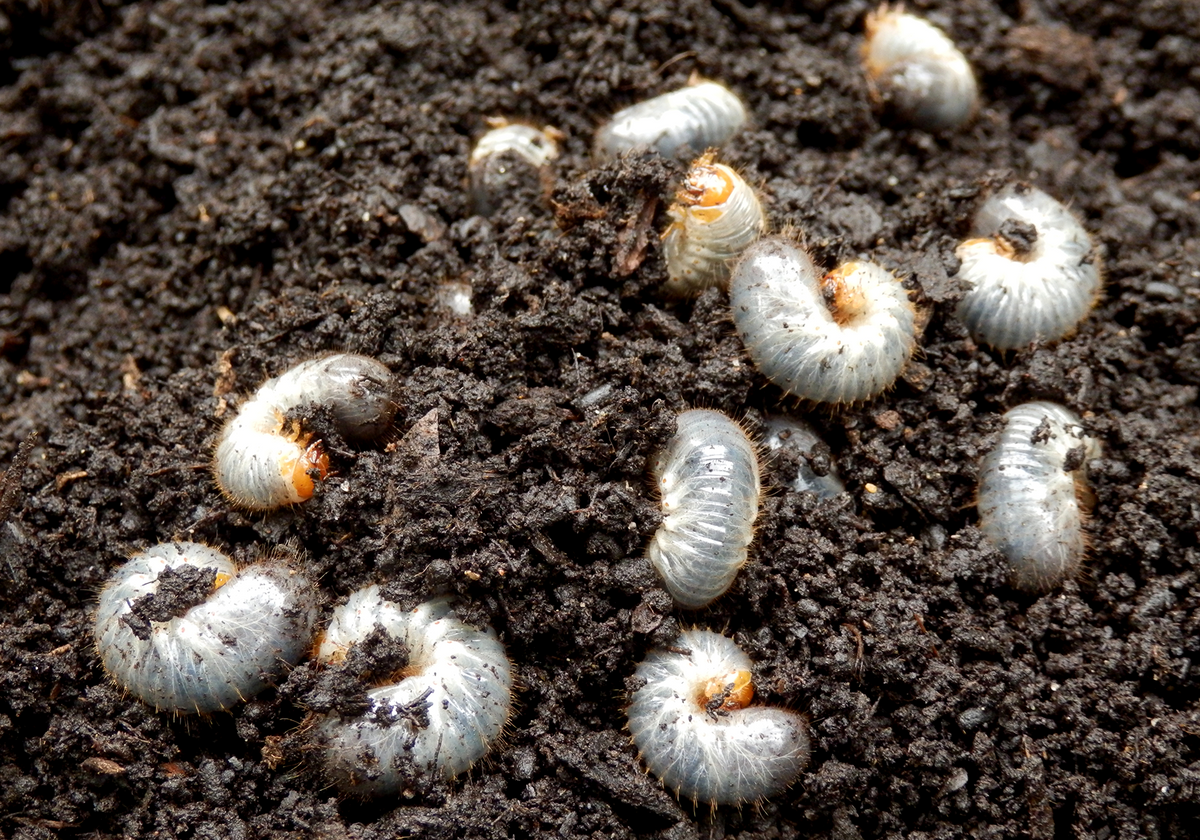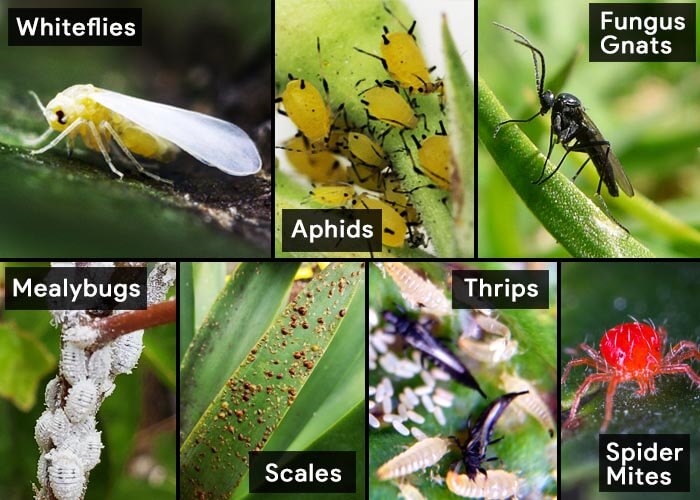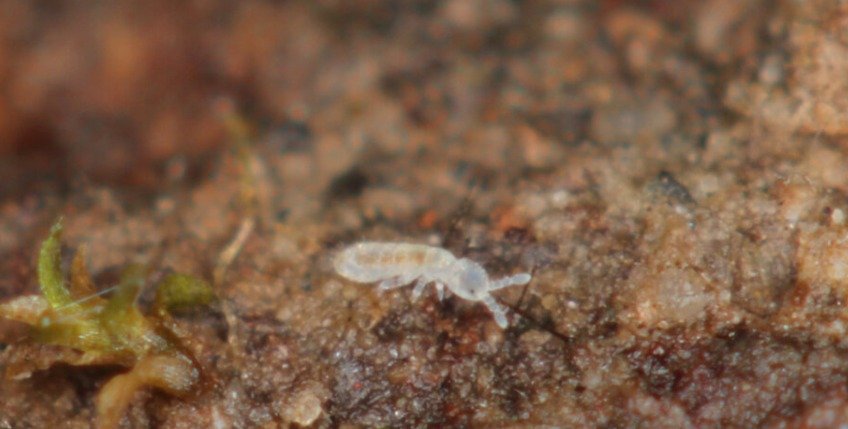Dead insects and other microorganisms can be beneficial to the soil and the plants that grow there. Dead insects are plentiful in some areas; you can use them by adding them to a compost pile or a potted plant.
When applied to soil, dead bugs directly supply important nutrients like nitrogen. The deceased creatures act as an additional source of food for the good bacteria and fungus in the soil, while the nitrogen is utilised by plants to develop green, healthy leaves for photosynthesis.
Plant growth depends on soil nutrients including nitrogen, phosphorus, and potassium. The amount of nutrients in the soil that are available to plants can be increased by adding additional input to the soil.
Simply putting dead bugs and other microscopic critters into the soil will add that extra free fertilizer. To do this, however, the proper soil conditions are required, which we will cover in more detail in this post.
Table of Contents
What Nutrients can Dead Bugs Add to Soil and How?
Even if they are dead, bugs are still living, breathing organisms. Protein, water salts, and a variety of other chemicals are what give biological creatures their unique characteristics.
Bugs and other decaying creatures are essential to the structure and nutrient content of soil. In every fertile soil, there are microscopic insects that have a life cycle. They gradually pass away and, like a dead beetle, contribute nutrients to the earth.
The proteins present in dead insects are identical to those of other microorganisms, and they also contribute to the minerals present in soil, such as nitrates and phosphates, which are essential nutrients for plants.
Nitrogen in the form of nitrates and ammonium is one of the more plentiful nutrients that come from dead insects.
Because ammonium is positively charged (a cation), it attracts other substances and releases its nitrogen slowly into the soil, making it a renewable supply of nitrogen.
However, nitrates are negatively charged, frequently remain in solution, and are rapidly leached out of the soil, thus this is not the case with them.
It should be emphasized that nitrates are a byproduct of bacteria breaking down ammonium molecules during the nitrification process.
In the soil, proteins are either synthesized or converted to nitrogen. The rotting process is slowed down when dead bugs or other organic materials are added to the soil.
Other biological entities in the soil, such as fungi and countless bacteria and microorganisms, hasten the decomposing process.
These bacteria are prevalent in the Rhizosphere, which is the top layer of soil. They are in charge of breaking down dead leaves and other microorganisms to produce humus.
These microorganisms, such as nitrogen-fixing bacteria, work in conjunction with specific circumstances (which we shall examine further) to convert dead insects into beneficial nutrients for plants.
Would you like to add more nutrients to your soil?
I have found that Miracle-Gro Soluble fertilizer produces the finest results. It offers excellent value for the money and is durable. Clicking here will take you there.
What Bugs does Soil Contain?
Soil can contain different types of microorganisms (microbes) such as:
- bacteria
- Fungi
- Dead insects and other microorganisms can be beneficial to the soil and the plants that grow there. Dead insects are plentiful in some areas; you can use them by adding them to a compost pile or a potted plant.
- When applied to soil, dead bugs directly supply important nutrients like nitrogen. The deceased creatures act as an additional source of food for the good bacteria and fungus in the soil, while the nitrogen is utilised by plants to develop green, healthy leaves for photosynthesis.
- Plant growth depends on soil nutrients including nitrogen, phosphorus, and potassium. The amount of nutrients in the soil that are available to plants can be increased by adding additional input to the soil.
Simply putting dead bugs and other microscopic critters into the soil will add that extra free fertilizer. To do this, however, the proper soil conditions are required, which we will cover in more detail in this post.
Even if they are dead, bugs are still living, breathing organisms. Protein, water salts, and a variety of other chemicals are what give biological creatures their unique characteristics.
Bugs and other decaying creatures are essential to the structure and nutrient content of soil. In every fertile soil, there are microscopic insects that have a life cycle. They gradually pass away and, like a dead beetle, contribute nutrients to the earth.
How Does Nitrogen Benefit Plants –
The proteins present in dead insects are identical to those of other microorganisms, and they also contribute to the minerals present in soil, such as nitrates and phosphates, which are essential nutrients for plants.
Nitrogen in the form of nitrates and ammonium is one of the more plentiful nutrients that come from dead insects.
Because ammonium is positively charged (a cation), it attracts other substances and releases its nitrogen slowly into the soil, making it a renewable supply of nitrogen.
However, nitrates are negatively charged, frequently remain in solution, and are rapidly leached out of the soil, thus this is not the case with them.
It should be emphasized that nitrates are a byproduct of bacteria breaking down ammonium molecules during the nitrification process.
In the soil, proteins are either synthesized or converted to nitrogen. The rotting process is slowed down when dead bugs or other organic materials are added to the soil.
How Many Bugs Can you Add to Soil
Other biological entities in the soil, such as fungi and countless bacteria and microorganisms, hasten the decomposing process.
These bacteria are prevalent in the Rhizosphere, which is the top layer of soil. They are in charge of breaking down dead leaves and other microorganisms to produce humus.
These microorganisms, such as nitrogen-fixing bacteria, work in conjunction with specific circumstances (which we shall examine further) to convert dead insects into beneficial nutrients for plants.
Would you like to add more nutrients to your soil?
I have found that Miracle-Gro Soluble fertilizer produces the finest results. It offers excellent value for the money and is durable. Clicking here will take you there.
Soil can contain different types of microorganisms (microbes) such as:
bacteria
Fungi
Soil Conditions to Decay Dead Organisms
Dead insects and other microorganisms can be beneficial to the soil and the plants that grow there. Dead insects are plentiful in some areas; you can use them by adding them to a compost pile or a potted plant.
- When applied to soil, dead bugs directly supply important nutrients like nitrogen. The deceased creatures act as an additional source of food for the good bacteria and fungus in the soil, while the nitrogen is utilised by plants to develop green, healthy leaves for photosynthesis.
- Plant growth depends on soil nutrients including nitrogen, phosphorus, and potassium. The amount of nutrients in the soil that are available to plants can be increased by adding additional input to the soil.
- Simply putting dead bugs and other microscopic critters into the soil will add that extra free fertilizer. To do this, however, the proper soil conditions are required, which we will cover in more detail in this post.
- Even if they are dead, bugs are still living, breathing organisms. Protein, water salts, and a variety of other chemicals are what give biological creatures their unique characteristics.
- Bugs and other decaying creatures are essential to the structure and nutrient content of soil. In every fertile soil, there are microscopic insects that have a life cycle. They gradually pass away and, like a dead beetle, contribute nutrients to the earth.
The proteins present in dead insects are identical to those of other microorganisms, and they also contribute to the minerals present in soil, such as nitrates and phosphates, which are essential nutrients for plants.
Moisture –
Nitrogen in the form of nitrates and ammonium is one of the more plentiful nutrients that come from dead insects.
Oxygen –
Because ammonium is positively charged (a cation), it attracts other substances and releases its nitrogen slowly into the soil, making it a renewable supply of nitrogen.
Acidity –
However, nitrates are negatively charged, frequently remain in solution, and are rapidly leached out of the soil, thus this is not the case with them.
It should be emphasized that nitrates are a byproduct of bacteria breaking down ammonium molecules during the nitrification process.
In the soil, proteins are either synthesized or converted to nitrogen. The rotting process is slowed down when dead bugs or other organic materials are added to the soil.
Temperature –
Other biological entities in the soil, such as fungi and countless bacteria and microorganisms, hasten the decomposing process.
These bacteria are prevalent in the Rhizosphere, which is the top layer of soil. They are in charge of breaking down dead leaves and other microorganisms to produce humus.
Soil Structure –
These microorganisms, such as nitrogen-fixing bacteria, work in conjunction with specific circumstances (which we shall examine further) to convert dead insects into beneficial nutrients for plants.
Would you like to add more nutrients to your soil?
Where to Find Dead Bugs to Add to Soil?
I have found that Miracle-Gro Soluble fertilizer produces the finest results. It offers excellent value for the money and is durable. Clicking here will take you there.
Soil can contain different types of microorganisms (microbes) such as:
bacteria
Fungi
– Sprinkle diatomaceous earth onto the surface of the soil and in the pot’s saucer. … Dead insects and other microorganisms can be beneficial to the soil and the plants that grow there. Dead insects are plentiful in some areas; you can use them by adding them to a compost pile or a potted plant.
FAQ
What are the bugs in my soil?
When applied to soil, dead bugs directly supply important nutrients like nitrogen. The deceased creatures act as an additional source of food for the good bacteria and fungus in the soil, while the nitrogen is utilised by plants to develop green, healthy leaves for photosynthesis.
Are soil bugs harmful?
Plant growth depends on soil nutrients including nitrogen, phosphorus, and potassium. The amount of nutrients in the soil that are available to plants can be increased by adding additional input to the soil.
Should I be worried about soil mites?
Simply putting dead bugs and other microscopic critters into the soil will add that extra free fertilizer. To do this, however, the proper soil conditions are required, which we will cover in more detail in this post.
How do you treat bugs in potting soil?
Even if they are dead, bugs are still living, breathing organisms. Protein, water salts, and a variety of other chemicals are what give biological creatures their unique characteristics.
How do I get rid of bugs in my potted soil?
Bugs and other decaying creatures are essential to the structure and nutrient content of soil. In every fertile soil, there are microscopic insects that have a life cycle. They gradually pass away and, like a dead beetle, contribute nutrients to the earth.



